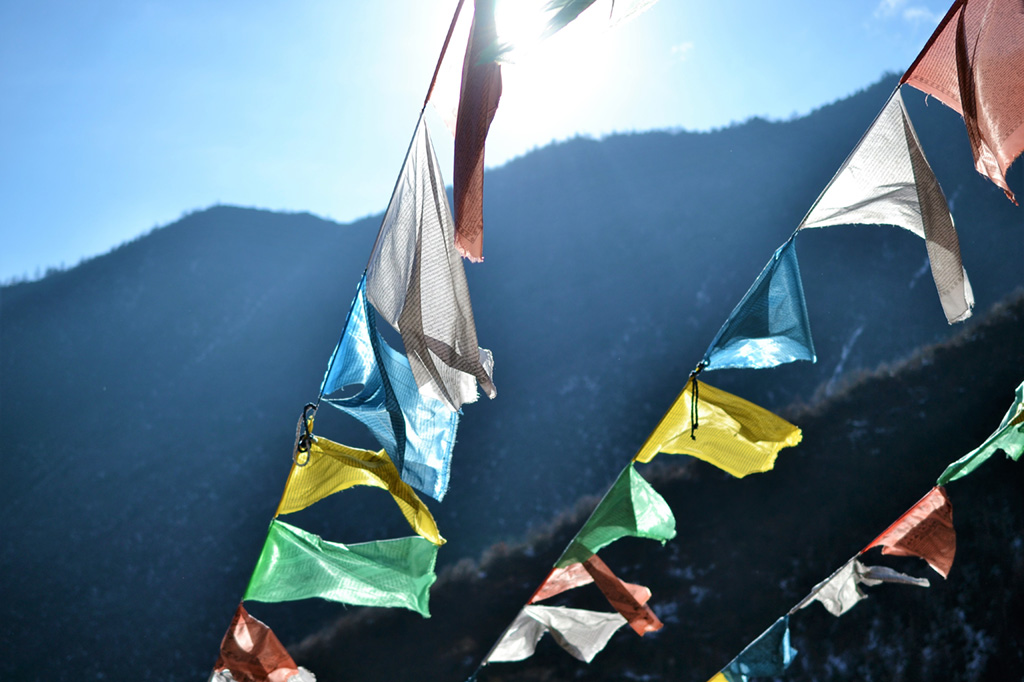Though never mainstream, Buddhism has been an undercurrent of Wood River Valley culture since the late 19th century. The first mining claim in the Valley was filed in 1865, and significant numbers of the workers in those early mines were Chinese immigrants who brought both Buddhist practice and textbooks with them. As happened throughout Western America, Buddhist thought and practice helped the immigrants endure the racial prejudice, discrimination, and violence they encountered in America. The core of Buddhist practice is sitting meditation, and the current popular discipline of mindfulness meditation grew from Buddhist roots.
Despite racial prejudice against its Asian practitioners, Buddhism seeped into the melting pot of 19th century America, including the writings of Whitman, Thoreau, and Emerson. Chicago’s The World Parliament of Religions in 1893 introduced Buddhism to mainstream America.
After World War II and into the 1950s and 1960s, numerous Buddhist teachers immigrated to America and established Buddhist centers, particularly in the West. They included Shunryu Suzuki Roshi in San Francisco, Chogyam Trungpa Rinpoche in Boulder and Taizan Maezumi Roshi in Los Angeles. Those teachers and many others influenced the rebellious counterculture of that time exemplified by Jack Kerouac, Allen Ginsberg, Gary Snyder, and Ram Dass. A 1970 Time Magazine article about that movement noted: “Of the many forms of Buddhism, the one best known in the West is Zen. Its guiding principles of inward meditation versus doctrine, of emphasis on the visceral and spontaneous as against the cerebral and structured, of inspiration rather than linear ‘logic,’ were seized on by the early beatniks, taken up by many of the young today, and were incorporated into the mystique of America’s counterculture.”
Buddhism is alive and well today in the Wood River Valley, its most visible presence the many Tibetan prayer flags seen on and in houses, in yards, in trees (sometimes in the backcountry) and in the back windows of cars, vans and trailers. In 2007, 10,000 people attended a talk in Hailey by His Holiness The Dalai Lama. Buddhism is also present in the daily practice, work, and right intention of many Valley locals.
Mary Ann Chubb was introduced to the teachings of Thich Nhat Hahn from the Beginners Mind Sangha in Boise in 1994. Her husband, Jim, practiced Buddhism with Trungpa Rinpoche in Colorado before his marriage, and after kept a simpler sitting practice. Mary Ann became a student of Tsoknyi Rinpoche and Anam Thubten in 2006. Since then Mary Ann has been among the leading local practitioners, teachers, organizers, and supporters of Buddhism.
Janet Abromeit moved to Hailey in 1994, the same year she joined the Institute of Noetic Sciences, for which the membership included a book by Buddhist monk and author Jack Kornfield, “A Path With A Heart.” It changed her life. Today, she is a member of California’s Spirit Rock Meditation Center where she frequently attends retreats. She hosts meditation groups at her home in Hailey as well as being involved in the organization of larger and longer retreats in the area.
By the time Kelley Weston first visited the mountains of Idaho in 1978 he had been practicing Tibetan Buddhism at the Naropa Institute in Boulder, Colo., under Trungpa Rinpoche since high school. He moved to Hailey in 1985 and in the mid-1990s became an aikido student of Myohei Genshin Sensei who was also a Soto Zen Monk. Weston became a devoted follower of both aikido and Zen, and he credits Myohei with bringing him back to his Buddhist life path. For a few years in the 1990s Myohei’s aikido studio also served as a gathering spot for Zen meetings and retreats that Weston attended. Now Kelley belongs to the Upaya Institute and Zen Center in Santa Fe, New Mex., and he practices “engaged Buddhism” with involvement in several environmental and social causes, including Western Watersheds.
Ann Down moved to Ketchum in 1994 after her children were grown as a retreat from a full if hectic California life. She built a log home with the philosophy of “Kill nothing living, use nothing toxic.” It was described in a Log Homes article as “Peaceful and sunny … a mecca for her four grandchildren.” “This home is peaceful,” Down explained. “You can put your feet up and not worry.”
A couple of years later a friend gave Down a copy of “Cutting Through Spiritual Materialism,” by Chogyam Trungpa, and she was immediately drawn to Buddhism and realized she had built her home on Buddhist principles without being aware of those precepts. Since then, she has practiced “engaged Buddhism” as a volunteer, sponsor and donor of works that support the welfare of children and the environment. She is a close friend and supporter of Roshi Joan Halifax, Founder, Abbot, and Head Teacher of Upaya Institute and Zen Center in New Mexico.
Chubb, Abromeit, artist Abby Grosvenor, and psychotherapist Diane Crist have been instrumental in organizing Buddhist retreats at nearby Soldier Mountain Resort, Lake Perkins, and various smaller venues in Hailey and Ketchum. Crist and the author started the longest standing [sic] sitting group in the Valley in 1992, which still meets once a week in Ketchum. 2


